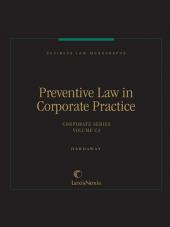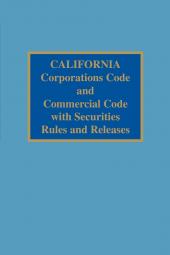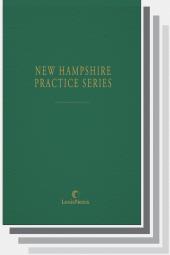Business Law Monographs, Volume C3--Preventive Law in Corporate Practice
Select a format
 International Order Inquiry
International Order Inquiry
Select subscription type
Terms & conditions
Subscribers receive the product(s) listed on the Order Form and any Updates made available during the annual subscription period. Shipping and handling fees are not included in the annual price.
Subscribers are advised of the number of Updates that were made to the particular publication the prior year. The number of Updates may vary due to developments in the law and other publishing issues, but subscribers may use this as a rough estimate of future shipments. Subscribers may call Customer Support at 800-833-9844 for additional information.
Subscribers may cancel this subscription by: calling Customer Support at 800-833-9844; emailing customer.support@lexisnexis.com; or returning the invoice marked "CANCEL".
If subscribers cancel within 30 days after the product is ordered or received and return the product at their expense, then they will receive a full credit of the price for the annual subscription.
If subscribers cancel between 31 and 60 days after the invoice date and return the product at their expense, then they will receive a 5/6th credit of the price for the annual subscription. No credit will be given for cancellations more than 60 days after the invoice date. To receive any credit, subscriber must return all product(s) shipped during the year at their expense within the applicable cancellation period listed above.
The total price includes the product(s) listed in the Order Form and any Updates for a limited period (minimum period of 30 days) after the order is placed ("Order Window"). Shipping and handling fees are not included in the grand total price.
All shipments may be returned, at subscribers' expense, for full credit of the Price within 30 days of receipt.
Shipments may not be returned, and no credits will be issued, more than 30 days after receipt.
After the Order Window, subscribers will receive notice of Updates along with the then-current grand total price and order process as Updates become available. Subscribers will only be shipped those Updates they specifically request.
Product description
Provides a concise review of preventive law programs for in-house and outside corporate counsel. Topics include compliance, training, litigation, contracts, and legal audits, and advice on how counsel to both small and large corporations can avoid legal problems through preventive lawyering.
Business Law Monographs, Preventive Law in Corporate Practice, provides a preventive law "tool box" common to all areas of substantive law.
Chapter 1 describes the historical development and benefits of the practice of preventive law. This chapter contains an overview of the historical and theoretical underpinnings of preventive law.
Chapter 2 describes how to avoid legal problems with a compliance program for the company and its employees. The chapter describes the growing use of legal policy statements as a form of "ten commandments" for corporate personnel and reviews a variety of widely used procedures to communicate and enforce the company's commitment to legal compliance.
Chapters 3 through 5 cover programs that carry out or supplement a basic compliance program. Chapter 3 describes how to conduct an employee training program through client seminars, newsletters, and other educational activities.
Chapter 4 describes tactics for controlling litigation risks. Chapter 5 addresses preventive law considerations in the drafting of the company's contracts.
Chapter 6 discusses how to conduct a legal audit. Legal audits are used to monitor adherence to compliance programs. They are a popular tool and serve as an "early warning system" for legal problems.
Chapter 7 discusses a variety of techniques for organizing the law department for the practice of preventive law, including strategic planning, office visits, law department brochures, and annual reviews with management.
Chapter 8 introduces and discusses the emerging area of cyber law, including a brief history of e-mail, e-commerce, electronic media discovery, misappropriation and misuse of corporate electronic resources, and a guide for the development of a corporate counsel legal research intranet.
Chapter 9, the final chapter in the monograph, is a brief summary and conclusion on the practice of preventive law in corporate law departments.
The Forms segment of the monograph includes a variety of materials used by law departments of large corporations: corporate policy statements, communications to managers and employees, legal education materials, alternative dispute resolution documents, and legal audit questionnaires.
With a great deal of variation in the legal environment of each corporation, Business Law Monographs, Preventive Law in Corporate Practice, is set up for corporate counsel to use many of the suggestions in the monograph to improve the preventive practices of their client.
Also available as part of the complete 38-volume set entitled Business Law Monographs.
eBooks, CDs, downloadable content, and software purchases are noncancelable, nonrefundable and nonreturnable. Click here for more information.
Table of contents
Division I TEXT
CHAPTER 1 Introduction to the Theory of Preventive Law
CHAPTER 2 Establishing Compliance Programs to Prevent Legal Problems
CHAPTER 3 Preventive Legal Training for Managers and Employees
CHAPTER 4 Preventive Methods for Handling Disputes and Litigation
CHAPTER 5 Preventive Aspects of Contract Drafting and Review
CHAPTER 6 Conducting Legal Audits as a Preventive Law Tool
CHAPTER 7 Organizing the Law Department for Prevention
CHAPTER 8 Bridging the Digital Divide
Appendix 8A. Developing a Corporate Intranet Legal Research Tool
CHAPTER 9 Conclusion
Division II FORMS
Form C3-1 The Legal Audit: A Reality Check for Entrepreneurial Companies
Form C3-2 Principles of Federal Prosecution of Business Organizations
Form C3-1 The Legal Audit: A Reality Check for Entrepreneurial Companies
Form C3-4 Certificate of Compliance
Form C3-5 How the Ethics Process Works at Lockheed Martin
Form C3-6 Lockheed Martin Corporation: Code of Ethics and Business Conduct
Form C3-7 Chipotle Mexican Grill, Inc. Code of Conduct
Form C3-8 Qwest Code of Conduct
Form C3-9 Qwest Ethical Business Practices for Consultants, Contractors, & Suppliers
Form C3-10 Model Master Dispute Resolution Agreements - Arbitration
Form C3-11 Macy's, Inc. Code of Business Conduct and Ethics
Form C3-12 Macy's, Inc. Corporate Governance Principles
Form C3-13 Target's Business Conduct Guide
Form C3-15 Seyfarth Shaw Management Alert
Form C3-15 Sample Memo and Certification for Vendors About Compliance
Form C3-16 Brooks Kushman Intellectual Property Primer
Form C3-17 Centura Health Integrity Standards
Form C3-18 Sample Newsletter Articles
Form C3-19 Corporate Compliance: Plan Now for Managing Electronic Data and Avoid Tomorrow's Legal Risks
Division III SOURCE MATERIALS
Item C3-i1 Department of Justice Sentencing Guidelines, Chapter 8--Sentencing of Organizations
 Lexis Nexis
Lexis Nexis 


